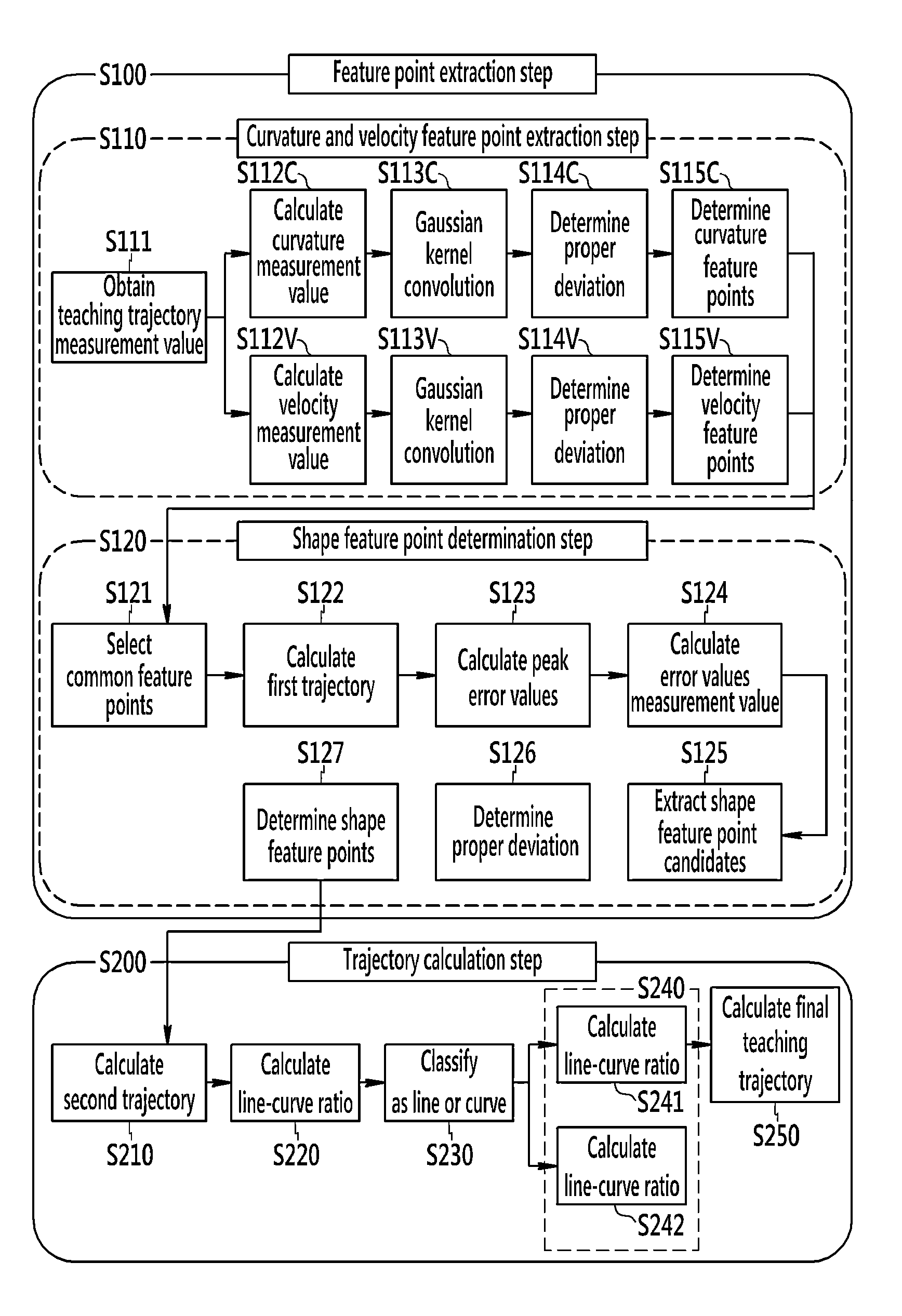Method of post-correction of 3D feature point-based direct teaching trajectory
a technology of feature point and direct teaching, applied in the field of post-correction of 3d feature point-based direct teaching trajectory, can solve the problems of difficult to accurately record the teaching trajectory, high complexity of trajectory programming itself, and high time and effort, and achieve the effect of improving the performance of direct teaching of robots, accurate reproduction of the teaching trajectory, and excellent performan
- Summary
- Abstract
- Description
- Claims
- Application Information
AI Technical Summary
Benefits of technology
Problems solved by technology
Method used
Image
Examples
Embodiment Construction
[0035]Hereinafter, a method of post-correction of a 3D feature point-based direct teaching trajectory according to the present invention having the above-described configuration will be described in detail with reference to the accompanying drawings.
[0036]FIG. 1 illustrates a schematic block diagram of a direct teaching device and a photograph of an exemplary embodiment. As illustrated therein, the direct teaching device 100 includes a robot arm including at least one joint. A user teaches the robot a trajectory by directly moving the robot along a trajectory having a desired shape while holding a tip end 110 of the direct teaching device 100. Once a direct teaching trajectory is recorded, the direct teaching device 100 itself may be operated to reproduce the teaching trajectory, or the recorded trajectory may be transplanted into other robots to reproduce the teaching trajectory.
[0037]At this point, a considerable amount of distortion and noise may be generated by the user's hand s...
PUM
 Login to View More
Login to View More Abstract
Description
Claims
Application Information
 Login to View More
Login to View More - R&D
- Intellectual Property
- Life Sciences
- Materials
- Tech Scout
- Unparalleled Data Quality
- Higher Quality Content
- 60% Fewer Hallucinations
Browse by: Latest US Patents, China's latest patents, Technical Efficacy Thesaurus, Application Domain, Technology Topic, Popular Technical Reports.
© 2025 PatSnap. All rights reserved.Legal|Privacy policy|Modern Slavery Act Transparency Statement|Sitemap|About US| Contact US: help@patsnap.com



